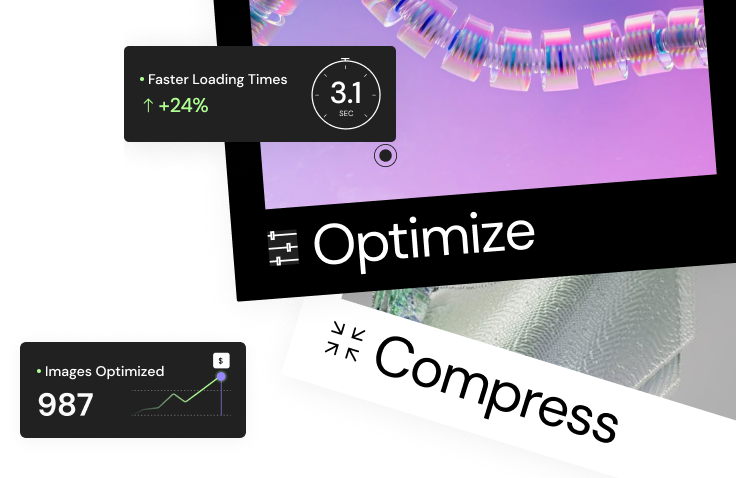We’ll walk through everything from basic principles to the actual design process, touching on current trends and how to integrate your final masterpiece seamlessly into your Elementor site. Let’s get started.
Why Your Business Needs a Strong Logo in 2025
Think about the brands you recognize instantly. Chances are, their logos pop into your head immediately. A strong logo isn’t just decoration; it’s a fundamental asset for any serious business, especially in today’s fast-paced digital world. Why is it so crucial?
First Impressions Count (More Than Ever)
In the online space, you have mere seconds to grab someone’s attention. Your logo is often part of that initial visual contact. A professional, well-designed logo signals credibility and trustworthiness from the get-go. Conversely, a poorly designed or generic logo can make potential customers pause, wondering if the quality of your products or services matches that amateur look. It sets the stage for everything that follows.
Building Brand Recognition and Trust
Consistency is key in branding. Your logo appears everywhere: your website, social media profiles, email signatures, business cards, maybe even physical products or storefronts. Seeing the same distinct visual repeatedly helps people remember you. Over time, this recognition builds familiarity, and familiarity often breeds trust. When customers recognize your logo, they associate it with their past experiences and perceptions of your brand. A strong logo acts as a familiar face in a crowd.
Standing Out in a Crowded Digital Space
Let’s face it, almost every market is saturated. Whether you’re a local bakery or a global tech company, you have competitors. How do you differentiate yourself visually? Your logo is a primary tool for this. A unique and memorable logo helps you carve out your visual identity, making it easier for customers to distinguish you from the competition. It’s your visual signature.
Supporting Your Marketing Efforts
Think of your logo as the visual anchor for all your marketing campaigns. It ties together your website, ads, social media posts, and email newsletters under one recognizable banner. A versatile logo works effectively across various platforms and sizes, ensuring your brand presence is consistent and professional wherever your audience encounters it. This consistency reinforces your brand message and makes your marketing more effective.
A strong logo isn’t optional in 2025. It’s a strategic necessity that shapes perception, builds recognition and trust, differentiates you from competitors, and strengthens your marketing impact. It’s the visual cornerstone of your brand identity.
Grow Your Sales
- Incredibly Fast Store
- Sales Optimization
- Enterprise-Grade Security
- 24/7 Expert Service
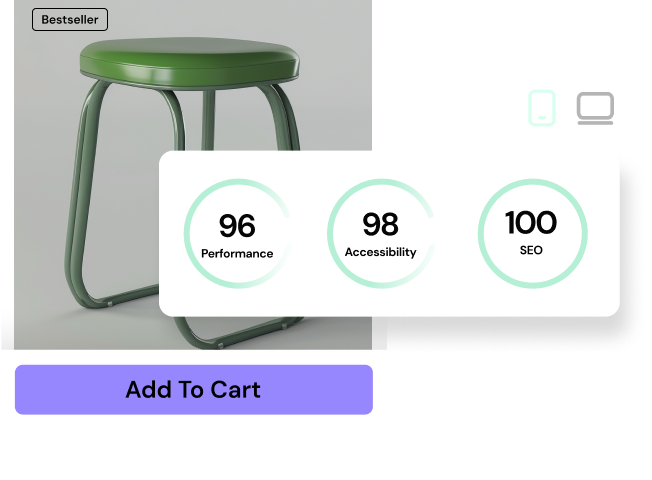
- Incredibly Fast Store
- Sales Optimization
- Enterprise-Grade Security
- 24/7 Expert Service
- Prompt your Code & Add Custom Code, HTML, or CSS with ease
- Generate or edit with AI for Tailored Images
- Use Copilot for predictive stylized container layouts
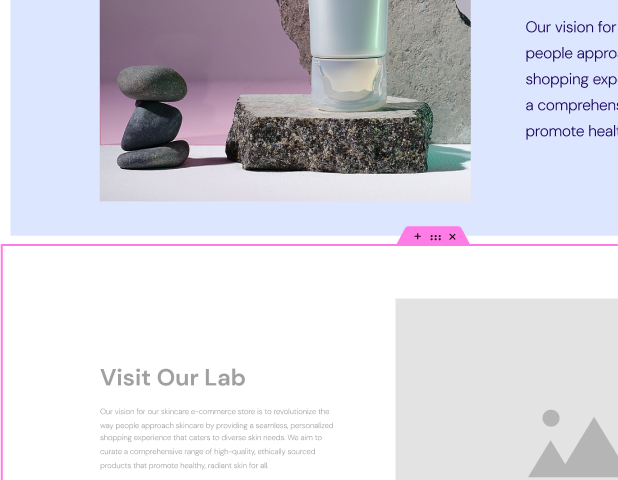
- Prompt your Code & Add Custom Code, HTML, or CSS with ease
- Generate or edit with AI for Tailored Images
- Use Copilot for predictive stylized container layouts
- Craft or Translate Content at Lightning Speed
Top-Performing Website
- Super-Fast Websites
- Enterprise-Grade Security
- Any Site, Every Business
- 24/7 Expert Service
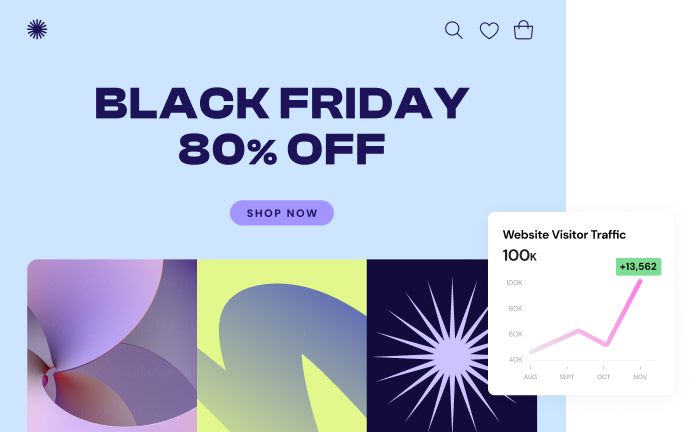
Top-Performing Website
- Super-Fast Websites
- Enterprise-Grade Security
- Any Site, Every Business
- 24/7 Expert Service
- Drag & Drop Website Builder, No Code Required
- Over 100 Widgets, for Every Purpose
- Professional Design Features for Pixel Perfect Design
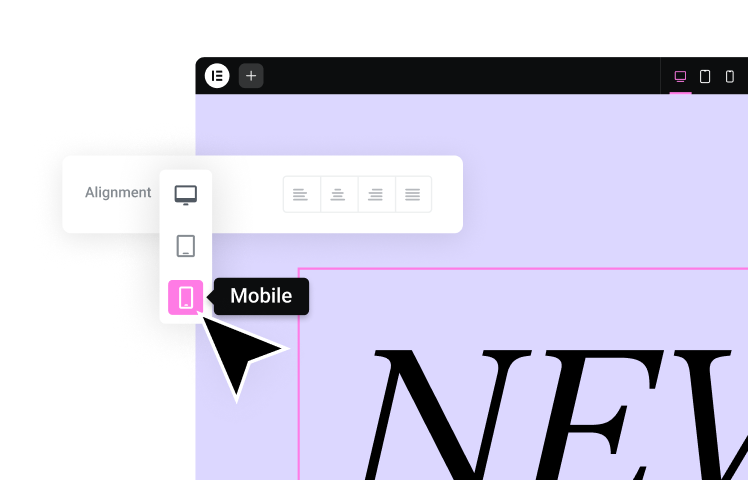
- Drag & Drop Website Builder, No Code Required
- Over 100 Widgets, for Every Purpose
- Professional Design Features for Pixel Perfect Design
- Marketing & eCommerce Features to Increase Conversion
- Ensure Reliable Email Delivery for Your Website
- Simple Setup, No SMTP Configuration Needed
- Centralized Email Insights for Better Tracking

- Ensure Reliable Email Delivery for Your Website
- Simple Setup, No SMTP Configuration Needed
- Centralized Email Insights for Better Tracking
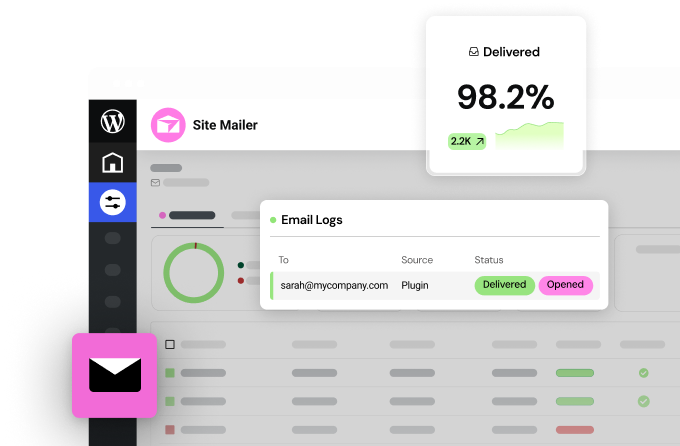
- Ensure Reliable Email Delivery for Your Website
- Simple Setup, No SMTP Configuration Needed
- Centralized Email Insights for Better Tracking
Understanding the Fundamentals of Logo Design
Before you jump into sketching or hiring a designer, it helps to understand what actually makes a logo work. It’s not just about looking pretty; effective logos share some core characteristics grounded in design principles.
Key Principles of Effective Logo Design
These aren’t rigid rules, but time-tested guidelines that contribute to successful logos:
- Simplicity: Can you easily recall or even sketch the logo after seeing it once? Simple logos are easier to recognize, remember, and reproduce across different mediums. Think Nike’s swoosh or Apple’s apple. Complexity often leads to confusion and poor scalability.
- Memorability: Does the logo stick in your mind? A memorable logo is often unique and clear. It avoids being overly generic or easily confused with others. Simplicity often aids memorability.
- Timelessness: Will this logo still look relevant in 5, 10, or even 20 years? While minor updates can happen, chasing fleeting design trends can quickly date your logo. Aim for a design with enduring appeal that reflects your core brand values, not just the flavor of the month.
- Versatility/Scalability: How does the logo look on a massive billboard versus a tiny favicon in a browser tab? A great logo maintains its clarity and impact at any size. It also works well in different contexts (e.g., black and white, color, on various backgrounds). This is where vector graphics become crucial, but more on that later.
- Appropriateness: Does the logo fit your industry and target audience? A logo for a children’s toy store will look very different from one for a corporate law firm. The style, colors, and imagery should feel relevant and resonate with the intended audience and the nature of the business.
Different Types of Logos (Pros and Cons)
Logos generally fall into several categories. Understanding these can help you decide which approach might best suit your brand:
| Logo Type | Description | Pros | Cons | Examples |
| Wordmark/Logotype | Focuses on the business name written in a specific font. | Good for name recognition; straightforward. | Can be long; relies heavily on unique typography. | Google, Coca-Cola, Visa |
| Lettermark/Monogram | Uses initials or abbreviations, often stylized. | Good for long names; often simple, memorable. | Doesn’t state the full name; can be less descriptive initially. | HBO, NASA, IBM |
| Brandmark/Pictorial | Uses an icon or graphic symbol representing the brand. | Highly visual, scalable; can become iconic. | Requires building association; may need name alongside initially. | Apple, Twitter bird (X) |
| Abstract Mark | A custom graphic shape, not representational. | Unique, avoids cultural misinterpretations; intriguing. | Meaning needs to be built/learned; less descriptive. | Nike swoosh, Pepsi logo |
| Mascot | Features an illustrated character representing the brand. | Personable, friendly; great for family/sports brands. | Can seem dated or unprofessional for some industries. | KFC’s Colonel, Mailchimp |
| Combination Mark | Combines text (wordmark/lettermark) with a symbol/icon. | Versatile; clear name & visual; symbol can be used alone. | Can sometimes be complex if not balanced well. | Burger King, Doritos |
| Emblem | Text inside a symbol or shape (like a badge or seal). | Traditional, established feel; compact. | Can lose detail at small sizes; sometimes less versatile. | Starbucks, Harley-Davidson |
(Note: Added ‘(X)’ to Twitter bird example for current relevance)
Choosing the right type depends heavily on your brand name, industry, target audience, and overall brand personality.
The Role of Color Psychology
Color isn’t just aesthetic; it evokes emotions and associations. While perceptions can vary culturally, some general Western associations include:
- Red: Excitement, passion, energy, urgency (often used for sales, food).
- Blue: Trust, stability, professionalism, calmness (common in corporate, tech, finance).
- Green: Nature, growth, health, wealth (used for eco-friendly, finance, health brands).
- Yellow: Optimism, warmth, clarity, cheerfulness (can signify caution too).
- Orange: Enthusiasm, creativity, friendliness, confidence.
- Purple: Royalty, luxury, wisdom, creativity (often used for high-end or imaginative brands).
- Black: Sophistication, power, elegance, formality.
- White/Silver: Purity, cleanliness, modernity, simplicity.
- Pink: Femininity, romance, youthfulness, sweetness.
- Brown: Earthiness, ruggedness, stability, reliability.
Consider 1-3 core colors for your logo that align with your brand’s intended message and appeal to your target audience. Don’t just pick your favorites!
Typography Matters More Than You Think
The fonts you choose communicate a lot about your brand personality.
- Serif Fonts (e.g., Times New Roman, Garamond): Have small decorative strokes (serifs). They often convey tradition, reliability, formality, and elegance.
- Sans-Serif Fonts (e.g., Arial, Helvetica, Open Sans): Lack serifs. They generally feel modern, clean, straightforward, and approachable. Very popular in digital design.
- Script Fonts: Mimic handwriting or calligraphy. They can range from elegant and formal to playful and casual. Often harder to read at small sizes.
- Display/Decorative Fonts: Highly stylized, unique fonts best used for headlines or logos, not body text. They convey strong personality but use them with caution for readability and timelessness.
Choose typography that is legible at various sizes and complements your chosen logo type and overall brand feel. Often, combining two complementary fonts (e.g., a sans-serif for the main name and a serif for a tagline) works well, but avoid using too many different fonts.
Designing an effective logo involves balancing key principles like simplicity and versatility, choosing an appropriate logo type, leveraging color psychology strategically, and selecting typography that enhances readability and reflects your brand personality. Understanding these fundamentals sets you up for a more successful design process.
The Logo Design Process: A Step-by-Step Guide
Alright, you understand the ‘what’ and ‘why’ of good logos. Now, how do you actually create one? Whether you’re doing it yourself or working with a designer, the process generally follows these steps.
Step 1: Define Your Brand Identity
You can’t design a logo for a brand you don’t understand. This foundational step is crucial.
- Understanding Your Target Audience: Who are you trying to reach? What are their demographics, values, aspirations, and pain points? What visual styles might resonate with them? Designing for your audience, not just yourself, is paramount.
- Defining Your Brand’s Personality and Values: If your brand were a person, what would they be like? Modern or traditional? Playful or serious? Luxurious or affordable? What core values does your business stand for? List keywords and concepts. This “brand brief” guides the design direction.
- Analyzing Competitors (for inspiration, not copying): Look at the logos of your direct and indirect competitors. What works well? What doesn’t? What visual trends are common in your industry? The goal isn’t to imitate but to understand the visual landscape and identify opportunities to differentiate yourself.
Step 2: Brainstorming and Sketching Ideas
This is where creativity comes alive. Don’t aim for perfection yet; focus on quantity and exploration.
- Mind Mapping and Word Association: Start with your brand keywords from Step 1. Branch out with related concepts, ideas, symbols, and visual metaphors.
- Getting Pen to Paper (or Stylus to Tablet): Sketching is faster than digital design for initial ideas. Don’t worry about artistic skill. Scribble down different shapes, symbols, font styles, and layouts based on your brainstorming. Try combining elements. Explore different logo types (wordmark, symbol, combination, etc.).
- Don’t Censor Yourself – Explore Widely: Generate lots of rough ideas, even ones that seem silly or off-track. Sometimes the best concepts emerge from unexpected places. Aim for dozens of quick sketches.
Step 3: Choosing Your Design Direction
Review your sketches. Which concepts feel strongest and best align with your brand identity (Step 1) and the principles of good logo design?
- Selecting the Right Logo Type: Based on your sketches and brand needs, narrow down the type of logo (wordmark, combination mark, etc.) that seems most promising.
- Considering Color Palettes: Think back to color psychology. Start exploring 2-3 potential color palettes that match your brand’s personality and appeal to your audience. How do these colors work together?
- Experimenting with Typography: If your logo includes text (most do), start exploring specific font options. Look for fonts that match your brand personality (serif, sans-serif, etc.) and are highly legible. Test how the brand name looks in different typefaces.
Step 4: Digitizing and Refining Your Logo
Time to bring your strongest 2-3 concepts to life digitally. This is where precision and technical execution matter.
- Using Vector Graphics Software: This is critical. Logos must be created as vector graphics (using software like Adobe Illustrator or alternatives like Affinity Designer or Inkscape). Vectors use mathematical equations to define lines and shapes. This means they can be scaled infinitely (from favicon to billboard) without losing quality or becoming pixelated. Avoid using pixel-based software like Photoshop for the primary logo creation.
- Iteration is Key – Refining Shapes, Lines, and Spacing: Carefully translate your chosen sketches into clean digital forms. Pay close attention to detail: refine curves, adjust line weights, ensure proper alignment, and check spacing (kerning between letters is important!). Make small tweaks and variations.
- Testing Different Color Variations: Apply your potential color palettes to the digital designs. See how they look. Also, create black and white versions – a strong logo should work well even without color.
Step 5: Gathering Feedback and Making Revisions
You’re likely too close to the design now. Fresh eyes are invaluable.
- Who to Ask for Feedback: Get input from stakeholders, colleagues, and ideally, people who represent your target audience. Avoid relying solely on friends and family unless they fit your customer profile.
- How to Interpret Feedback Constructively: Ask specific questions: “What does this logo make you think of?” “Which one feels more trustworthy/modern/playful?” “Is anything unclear or confusing?” Don’t just ask “Do you like it?”. Look for patterns in the feedback. Be open to criticism, but weigh it against your brand strategy (Step 1). Use the feedback to make informed revisions to your chosen design.
Step 6: Finalizing Your Logo Files
Once you’ve settled on the final design after revisions, you need to prepare the necessary files for various uses.
- Essential File Formats:
- Vector: .SVG (Scalable Vector Graphics – ideal for web), .AI (Adobe Illustrator native file – the master file), .EPS (Encapsulated PostScript – often needed for print). You need these vector versions.
- Raster: .PNG (Supports transparency – essential for web use, overlays), .JPG (Best for photos, doesn’t support transparency – less ideal for logos but sometimes needed). Provide these in various common sizes, but always keep the vector master safe!
- Creating Logo Variations: You’ll likely need different versions:
- Full color
- Black version
- White (knockout) version
- Sometimes a simplified version or icon-only (for favicons or small applications)
- Horizontal and vertical layouts if applicable (for different space constraints)
- Developing Simple Brand Guidelines: Even a basic one-page guide helps ensure consistency. Specify the primary logo, acceptable variations, color codes (HEX, RGB, CMYK, Pantone if needed), minimum size, clear space requirements (how much empty space to leave around the logo), and possibly the fonts used.
The logo design process is iterative. It starts with brand definition and moves through brainstorming, digital refinement, feedback, and final file preparation. Following these steps methodically increases the chances of creating a truly effective and professional logo.
Logo Design Trends for 2025 (and Beyond?)
It’s helpful to be aware of current trends, but remember the principle of timelessness. Don’t blindly follow trends; consider if they genuinely align with your brand and have lasting potential. Here are a few things gaining traction in 2025:
Simplicity and Minimalism Continue
This isn’t new, but it persists for good reason. Clean lines, uncluttered compositions, and often geometric shapes remain popular. They are versatile, scalable, and easy to remember. Think pared-back icons and sleek wordmarks.
Animated & Dynamic Logos for Digital Spaces
With digital platforms dominating, logos are coming alive. Subtle animations (e.g., morphing shapes, appearing text) can add personality and capture attention on websites, social media, and video intros. These often work alongside a static version.
Nostalgia and Retro Vibes
Drawing inspiration from past decades (70s funk, 90s aesthetics, Y2K styles) continues to be a trend. This often involves specific color palettes, chunky fonts, or vintage illustration styles. It can evoke comfort and familiarity but needs to be done authentically to avoid feeling gimmicky.
Bold Typography Takes Center Stage
Unique and expressive typography is increasingly becoming the focus of logos, especially wordmarks and lettermarks. Expect to see custom fonts, exaggerated letterforms, and creative type treatments used to make a statement.
Gradient Usage Evolves
Gradients are still around, but designers often use them more subtly or in unexpected ways compared to the heavy gradients of the past. Think smooth, sophisticated color transitions or gradients applied to specific elements rather than the entire logo.
Sustainable and Eco-Conscious Visuals
As sustainability becomes more important to consumers, logos are reflecting this. Expect more earthy color palettes (greens, browns, blues), nature-inspired motifs (leaves, water), and designs that convey transparency and responsibility.
Caution: Trends vs. Timelessness
It’s tempting to jump on the latest bandwagon. But ask yourself: Will this trend still look good in five years? Does it truly represent my brand, or am I just following the crowd? Often, the strongest logos incorporate classic design principles while perhaps giving a subtle nod to current aesthetics. They are not entirely trend-driven. Prioritize clarity, appropriateness, and longevity over fleeting fashion.
While trends like animation, nostalgia, and bold typography are visible in 2025, always evaluate them against the core principles of good logo design and your specific brand identity. Aim for relevance and longevity, not just trendiness.
Tools and Resources for Logo Creation
So, you know the process and principles. How do you actually make the logo? You have a few options:
DIY Logo Makers
Online logo maker tools offer templates and simple interfaces to generate logos quickly and affordably.
- Pros: Fast, inexpensive (sometimes free), accessible to non-designers.
- Cons: Often result in generic-looking logos (many others might use the same templates/icons), limited customization, may not provide proper vector files, questionable uniqueness and trademarkability. Generally best for temporary solutions or very small projects.
Working with Professional Designers
Hiring a professional designer (freelancer or agency) is often the best route for a unique, strategic, and high-quality logo.
- Freelancers: Offer a wide range of styles, experience levels, and price points. Platforms like Upwork, Fiverr Pro, or Dribbble can help you find them. Look at portfolios carefully. Communication is key.
- Agencies: Typically more expensive but offer a team approach, potentially more strategic input, project management, and broader branding services. Better suited for larger businesses or those needing comprehensive branding.
- Pros: Unique, custom design based on your brief; strategic thinking; professional execution; provides all necessary file formats and guidelines.
- Cons: Higher cost; takes time (weeks or months); requires clear communication and finding the right fit.
Leveraging Design Software
If you have design skills or are willing to learn, professional vector software is the tool of choice.
- Industry Standard: Adobe Illustrator is the dominant professional vector editor. It’s powerful but has a steeper learning curve and subscription cost.
- Affordable Alternatives: Affinity Designer offers a very capable, one-time purchase alternative. Inkscape is a free, open-source option, though perhaps less polished.
- Pros: Complete creative control; ensures technical quality (vector output).
- Cons: Requires design skills and software knowledge; time-consuming.
Where Elementor Fits In: Integrating Your Logo Seamlessly
Once you have your fantastic logo files, you need to display them effectively on your website. This is where a powerful tool like Elementor shines. Elementor doesn’t create your master logo file (that’s done in vector software), but it makes integrating and managing it on your WordPress site incredibly easy and flexible.
- Using the Site Logo Widget: Elementor Pro’s Theme Builder lets you visually design your site header (and footer, and other template parts). The dedicated Site Logo widget pulls the logo you set in the WordPress Customizer or Elementor’s Site Settings. This ensures your logo appears consistently across your entire site wherever you use the header template.
- Easy Upload and Replacement: You can easily upload and manage your site logo through Elementor’s Site Identity settings, often simplifying the default WordPress process.
- Ensuring Logo Responsiveness with Elementor’s Controls: This is huge. Your logo might need to look different on desktop, tablet, and mobile. Elementor’s responsive controls allow you to adjust the logo’s size specifically for each device breakpoint. You can easily make the logo smaller on mobile screens to save space without writing any code. Some themes integrated with Elementor even allow uploading a separate, perhaps simplified or differently formatted, logo specifically for mobile headers.
- Maintaining Visual Consistency Across Your Elementor Site: By using the Site Logo widget within your Elementor Theme Builder templates, you guarantee that the same logo file and link are used everywhere (headers, footers, etc.). If you ever need to update your logo, you change it in one central place (Site Settings/Customizer), and Elementor automatically updates it across your entire website. This consistency is crucial for branding.
You can create a logo using DIY tools (with limitations), professional software, or by hiring a designer. Regardless of how it’s made, Elementor provides the tools (especially the Site Logo widget and responsive controls) to easily integrate, manage, and display your logo effectively and consistently across your WordPress website. This ensures it looks great on all devices.
Common Logo Design Mistakes to Avoid
Creating a great logo also means steering clear of common pitfalls. Here are some mistakes I often see:
- Overly Complex Designs: Too many colors, fonts, effects, or intricate details. Remember: simplicity aids recognition and scalability. If it’s hard to grasp at a glance or looks messy when small, it’s likely too complex.
- Relying Too Heavily on Trends: Designing solely based on current fads can make your logo look dated quickly. Aim for timelessness with perhaps subtle nods to modern aesthetics if appropriate.
- Poor Font Choices: Using fonts that are hard to read (especially at small sizes), cliché (like Papyrus or Comic Sans for professional brands), or don’t match the brand’s personality. Also, using too many different fonts (stick to 1-2).
- Copying or Being Too Similar to Competitors: This can lead to brand confusion and even legal issues. Research the competition to ensure your design is distinct. Aim for differentiation, not imitation.
- Designing for Yourself, Not Your Audience: Choosing colors or styles based purely on personal preference rather than strategic thinking about the target audience and brand message.
- Using Raster Images for the Master Logo: Designing the logo in Photoshop or using a JPG/PNG as the main file. Logos must be created in vector format (.AI, .SVG, .EPS) for scalability. Raster images become pixelated when enlarged.
- Not Considering Scalability: Failing to check how the logo looks at very small sizes (like a favicon) and very large sizes (like a sign). Details can disappear or look awkward if scalability isn’t considered during design.
- Inappropriate Imagery or Connotations: Using symbols or shapes that might have unintended negative meanings or don’t align with the brand’s values or industry.
Avoid common mistakes like over-complexity, trend-chasing, poor typography, copying others, designing based on personal taste alone, using raster formats for the master file, and neglecting scalability or potential negative connotations. Being aware of these pitfalls helps you create a more effective and professional logo.
Conclusion: Your Logo is Your Visual Cornerstone
Whew! We’ve covered a lot, from the fundamental importance of a logo in 2025 to the nitty-gritty of design principles, process steps, trends, tools, and common mistakes.
Creating a compelling business logo is more than just an artistic exercise; it’s a strategic investment in your brand’s identity. It’s your visual handshake, your mark of recognition, and a key element that ties your entire brand presence together. Remember the key takeaways:
- Be Strategic: Define your brand and audience first.
- Embrace Principles: Aim for simplicity, memorability, timelessness, versatility, and appropriateness.
- Follow a Process: Brainstorm broadly, refine digitally (in vector format!), get feedback, and prepare proper files.
- Be Aware, Not Enslaved by Trends: Use trends thoughtfully if they fit your brand’s long-term vision.
- Use the Right Tools: Whether it’s professional software, hiring a designer, or leveraging Elementor to seamlessly integrate your final logo onto your site.
- Avoid Common Pitfalls: Steer clear of complexity, poor typography, and raster-based designs.
Your logo works tirelessly for you, 24/7. Investing the time and effort (or resources) to get it right pays dividends in brand recognition, customer trust, and professional perception. Now, go forth and create (or commission) a logo that truly represents the heart of your business! Good luck!
Looking for fresh content?
By entering your email, you agree to receive Elementor emails, including marketing emails,
and agree to our Terms & Conditions and Privacy Policy.
